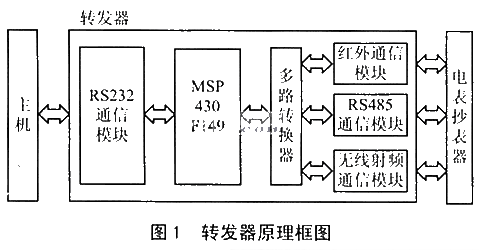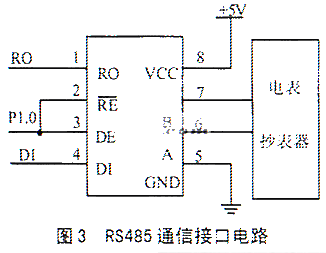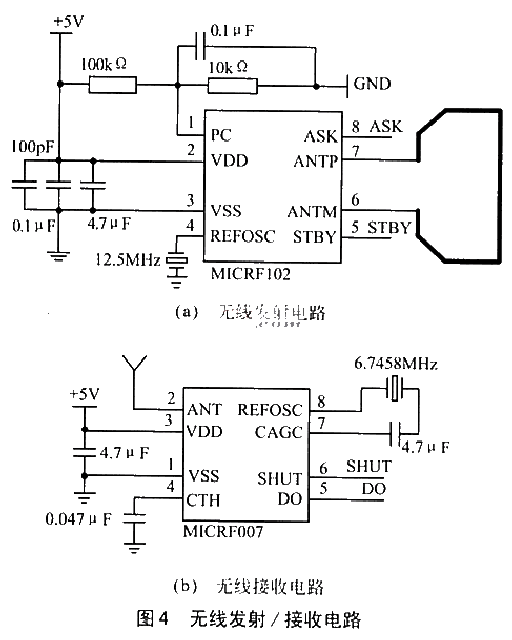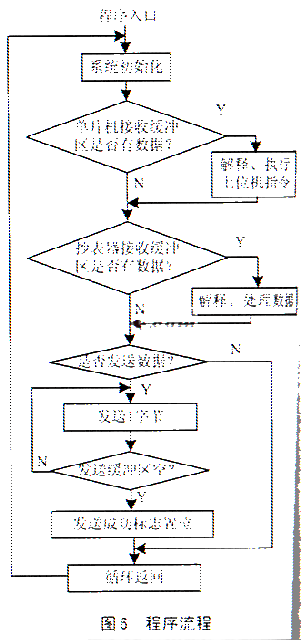|
The OP
Published on 2020-5-9 23:07
Only look at the author
This post is from Microcontroller MCU
Latest reply
Thanks for sharing
Details
Published on 2020-5-26 09:58
| ||
|
|
||
|
alan000345
Currently offline
|
2
Published on 2020-5-26 09:58
Only look at the author
|
|
|
|
|
|
- 【Posts】Design of data forwarder based on MSP430F149
- 【Posts】MSP430F149 small system development board implements USART data receiving interrupt
- 【Posts】MSP430F149 serial port 1 interrupt reception, the program can enter the interrupt, but the interrupt flag bit cannot enter the program
- 【Posts】Dear seniors, please tell me how to read the GIE bit of MSP430F149! It would be best if it can be assembled in C language!
- 【Posts】LCD1602 dynamic display--based on MSP430F149 single chip microcomputer
- 【Posts】Dear seniors, please tell me how to read the GIE bit of MSP430F149! It would be best if it can be assembled in C language!
- 【Posts】MSP430F149 serial RS485 interface
- 【Posts】MSP430F149 serial port 1 interrupt reception, the program can enter the interrupt, but the interrupt flag bit cannot enter the program
- 【Download】msp430F149 data sheet in Chinese
- 【Download】msp430f149 datasheet
- 【Download】Description: For MSP430F149. Asynchronous communication. Receive data from the serial port
- 【Download】MSP430F149 User Guide and Datasheet
- 【Download】msp430f149 learning board.rar
- 【Download】MSP430F149 MCU uses 12864 LCD to draw DS18B20 temperature curve source code
- 【Download】MSP430F149 examples and programs
- 【Download】MSP430F149 development board commonly used classic routines
- 【Design】Blood pressure monitor design based on MSP430F149
- 【Design】MSP430F149 minimum system schematic diagram
- 【Design】MSP430F149 Minimum System
- 【Design】MSP430F149 minimum system V5.2 schematic diagram
- 【Design】An infrared sensor timer based on msp430F149
- 【Design】Blood pressure monitor design based on MSP430F149
- 【Articles】Design of data forwarder based on MSP430F149
- 【Articles】Design of GPS positioning data acquisition system based on MSP430F149 microcontroller
- 【Articles】Design of GPS positioning data acquisition system based on MSP430F149
- 【Articles】MSP430F149 MCU implements uart data receiving interrupt
- 【Articles】MSP430F149 timing data acquisition program
- 【Articles】MSP430F149 MCU uses the serial port to send data to the PC
-
MSP430F149 small system development board implements USART data receiving interrupt
////MSP-FET430P140Demo-USART0,Ultra-LowPwrUART2400EchoISR,32kHzACLK////Description:Echoareceivedcharacter,RXISRused.IntheMainloopUART0//ismadereadytoreceiveonecharacterwithinterruptactive.TheMainloop//waitsinLPM3.TheUART0ISRforcestheMainloo ...
-
Simple stopwatch based on MSP430f149 microcontroller
Function:Pressabuttontostarttiming,pressthebuttonagaintopausetiming,thatis,onebuttoncanrealizethepauseandstartfunction,setanotherbutton,pressthebuttonformorethanthreeseconds,thestopwatchisresetThisexperimentusesthetimingfunctionoftimerAofMS ...
-
DIY a pocket experimental power supply
ExperimentalpowersupplyisoneofthemostbasictoolsforelectronicDIYAsapowersupplyforamateurDIY,therearemanyoccasionsfordemand,whichcannotbecoveredbyasinglepowersupplyIoftenneedacompactpowersupply. WhenIwasinjuniorhighschool,Ihadoneortwoa ...
- [V2S200D Voice Vibration Sensor Evaluation Kit Review] Review Summary
- [V2S200D Voice Vibration Sensor Evaluation Kit Review] Audacity Tool Test
- Analog Discovery 2 review
- What is the purpose of connecting a 10uF capacitor after the op amp output?
- Who needs WiFi 7?
- Policy support instrument stocks have strong demand for rebound
- 【GD32E230】 EVAL board project creation and lighting
EEWorld Datasheet Technical Support
-
"Cross-chip" quantum entanglement helps build more powerful quantum computing capabilities
IBM scientists have achieved "cross-chip" quantum entanglement - successfully entangled two "Eagl
-
Ultrasound patch can continuously and noninvasively monitor blood pressure
A research team at the University of California, San Diego, has developed an innovative wearable
-
Europe's three largest chip giants re-examine their supply chains
At the Electronica 2024 CEO Roundtable held just last week, the CEOs of three chip giants, Infine
- It is reported that Kioxia will be approved for listing as early as tomorrow, and its market value is expected to reach 750 billion yen
- The US government finalizes a $1.5 billion CHIPS Act subsidy to GlobalFoundries to support the latter's expansion of production capacity in the US
- SK Hynix announces mass production of the world's highest 321-layer 1Tb TLC 4D NAND flash memory, plans to ship it in the first half of 2025
- UWB is a new way to use it in cars. Can wireless BMS also use it?
- Filling the domestic gap! China Mobile, Huawei and others jointly released the first GSE DPU chip
- Samsung Electronics NRD-K Semiconductor R&D Complex to import ASML High NA EUV lithography equipment
- Apple reveals the secret of its own chip success: competitors can't use the latest cutting-edge technology
- Problems with STM32 and passive buzzer playing sound
- Embedded Tutorial_DSP Technology_DSP Experiment Box Operation Tutorial: 2-28 Building a Lightweight WEB Server Experiment
- OPA847IDBVR op amp domestic replacement
- AG32VF407 Test UART
- [Digi-Key Follow Me Issue 2] Chapter 1: Sharing on receiving the goods
- What model is this infrared receiver? Which model can be used instead? Thank you
- Selling brand new unopened ZYNQ 7Z020 FPGA core board
- The LORA module used in the lithium battery-powered water meter setting can save energy when 100 water meters are installed in one corridor.
- I would like to ask, when a port is set to RX0, is it necessary to set the input and output direction of this port?
- Why is this year so difficult? It’s even more difficult than during the pandemic. I’m 30 and facing unemployment. I’m so confused.
- Ask about the voltage regulator test question
- [Xiaohua HC32F448 Review] About Xiaohua Semiconductor's UART interrupt sending and PRINTF construction and redirection
- 【BIGTREETECH PI development board】 HDMI output test
- 【BIGTREETECH PI development board】+08. Audio test (zmj)
- [Xiaohua HC32F448 Review] +RTC electronic clock
- 有奖直播报名| 高可靠性IGBT新选择 —— 安世半导体650V IGBT
- 【直播时间】12月19日(周四)下午15:00-16:30
【直播好礼】定制双肩商务包、30元京东卡、吸管玻璃杯
- 安世半导体直播报名中
- 直播主题:安世半导体理想二极管与负载开关,保障物联网应用的稳健高效运行
直播时间:12月17日(周二)下午14:00
报名就有机会获得:定制双肩商务包、30元京东卡、吸管玻璃杯
- PI 电源小课堂 | 无 DC-DC 变换实现多路高精度输出反激电源
- 时间:即日起-12月15日
看视频学习电源干货,答题赢取京东卡!
- 参会有好礼 | 2024 瑞萨电子MCU/MPU工业技术研讨会
- 深圳站:11月30日(周六)深圳湾万怡酒店
上海站:12月06日(周五)上海喜玛拉雅酒店
奖励设置:现金红包、螺丝刀套装或30元京东卡
- Littelfuse 新品赋能电子产品安全可靠并高效, 10+挑战等你探索!
- Littelfuse 应用赋能星球,覆盖了诸多应用痛点及解决办法,邀请工程师一起探索,解锁更多设计力!
- 下载资料赢好礼!看Vicor模块化电源解决方案如何推动创新
- 活动时间:即日起-2024年12月31日
如何参与:点击活动页内您想了解的模块,找到资料下载即可参与抽奖,活动结束后统一发奖!
- 有奖活动|英飞凌高密度双相电源模块为高性能运算平台而生
- 活动时间:即日起-12月15日
活动奖励:蓝牙音箱、氮化镓充电器套装、黑色小背包
- 本周精选下载推荐:电源管理基础Dummies
- 本周小编给大家带来一本超简单、超干货的电子书——《电源管理基础Dummies》!内容深入浅出,排版舒服简洁,分分钟能get到电源管理最核心的知识内容。
EEWorld
subscription
account

EEWorld
service
account

Automotive
development
circle

About Us Customer Service Contact Information Datasheet Sitemap LatestNews
- I want to get started with microcontrollers without any basic knowledge, what should I do?
- I want to get started with dsp microcontroller programming, what should I do?
- For beginners of 32 MCU, please give a study outline
- For Octave machine learning introduction, please give a learning outline
- For beginners of machine learning keras, please give a learning outline
- For an introduction to machine learning software, please give a study outline
- How to get started with deep learning in the first year of graduate school
- What is an MCU module?
- Top 10 GPU Companies
- What does the linux shutdown command mean?


 Room 1530, Zhongguancun MOOC Times Building,
Block B, 18 Zhongguancun Street, Haidian District,
Beijing 100190, China
Tel:(010)82350740
Postcode:100190
Room 1530, Zhongguancun MOOC Times Building,
Block B, 18 Zhongguancun Street, Haidian District,
Beijing 100190, China
Tel:(010)82350740
Postcode:100190
 京公网安备 11010802033920号
京公网安备 11010802033920号







 提升卡
提升卡 变色卡
变色卡 千斤顶
千斤顶